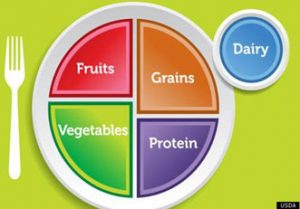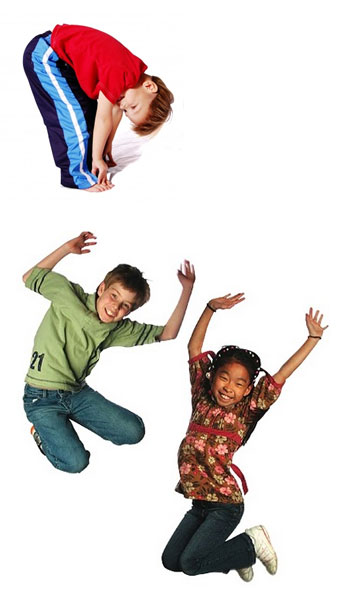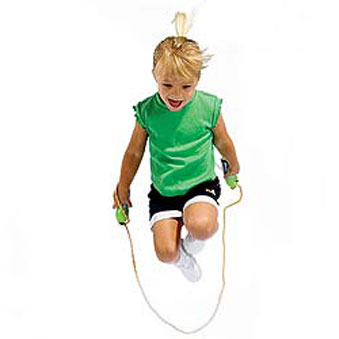Kids In Motion
MOVE IT! The evidence has been piling up: for a healthy life you need exercise in your daily routine. The human body is designed for movement and physical activity.
Xmada Fitness Kids in Motion is a group fitness program that offers extra physical activity to help keep our kids fit. Apart from increased physical fitness and better health, the program also promotes team work, communication skills, lateral thinking, self confidence and leadership skills. This program will allow children to improve their coordination, strength, cardiovascular, endurance and body fat percentage to decrease with inspired activities.
Implementing a child to our fitness program as a daily routine does not have to be hard, but fun. Depending on the age of the children, our program focuses on the specific sport or free play. Our training specialist, are highly educated and experienced.
Xmada Fitness Kids in Motion are comprised of several physical activities in a number of fun ways for the kids to enjoy while they get fit. We provide a service to your community such as:
- Fitness Challenge
- Hip Hoop Dance
- Caribbean Dance
- Kick Boxing
Ages 5-11
Physical activity plays an important role in the health, well-being and quality of life of all particularly important for children and youth. Incorporating vigorous-intensive activities at least three days per week will build muscle and strength. Engaging in such activities will create opportunities to socialize, improve fitness, concentration, better academic scores, stronger heart, bones, self-esteem, posture and balance and lower stress.
Ages 12-17
Be active at home, at school, at play. You will have more energy feel healthy and strong, and good about yourself. Incorporate one hour each day of vigorous-intense activity. Build your bones and increase muscle when combining aerobic and strengthening activities. Engaging in walking, running, biking, swimming, skateboarding, skiing, skating, yoga, hip hop dance, any team sport or work out with a buddy. You do not have to work out until you feel pain of fatigue to gain benefits. The key is to find the exercise that is right for you.
EXERCISING:
- Helps keep your weight under control
- Boost your energy level
- Increases muscle strength
- Releases tension and stress
- Helps you to sleep better
- Can be a lot of fun
- Improve mental health
- Have a strong heart
- Helps with growth and development
- Do better in school
Moderate aerobic activity- walking quickly, skating, bike riding and skateboarding. This moderate aerobic activity makes you breathe harder and your heart beat faster.
Vigorous aerobic activity- Running, basketball, soccer and cross-country skiing, football. Your heart rate will increase even more and you will not be able to say more than a few words.
Strengthening activity- Push-ups, sit-ups, lifting weights, climbing stairs and riding a bike. With bone-strengthening activities your muscles push against your bones, helping make your bones stronger.
Combined aerobic and strengthening activities- To achieve health benefits, children and youth need to do both aerobic and strengthening activities. Aerobic activities result in faster breathing, a warmer feeling and an increased heart rate. Strengthening activities build muscles and bones.
GET STARTED TODAY!
CALL OUR REPRESENTATIVES TO FIND OUT WHEN THE NEXT YOUTH FITNESS CHALLENGE IS IN YOUR AREA.
Healthy eating is associated with reduced risk for many diseases, including several of the leading causes of death: heart disease, cancer, stroke, and diabetes.
Healthy eating in childhood and adolescence is important for proper growth and development and can prevent health problems such as obesity, dental caries, iron deficiency, and osteoporosis.
The Dietary Guidelines for Americans recommend a diet rich in fruits and vegetables, whole grains and fat-free and low-fat dairy products for persons aged two and older. The guidelines also recommend that children and adolescents limit intake of solid fats (major sources of saturated and trans fatty acids), cholesterol, sodium, added sugars, and refined grains.
The six main food groups for kids are:
- Grains– Whole grains are a good source of fiber, iron, and other vitamins. Try to avoid refined grains like white bread or white riceGrains- Whole grains are a good source of fiber, iron, and other vitamins. Try to avoid refined grains like white bread or white rice.
- Vegetables– is another good source of fiber, folate, potassium, vitamins A, C and E
- Fruit– are a great source of potassium, fiber, and vitamin C. Eating whole fruits is better than drinking 100% fruit juice.
- Milk– milk, cheese, yogurt, and other dairy provides kids with calcium, potassium, protein, iron, zinc, magnesium, vitamins including E and B.
- Meat, Poultry, Fish, Beans, Nuts and Eggs– is a great source of protein, iron, zinc, magnesium, and vitamins E and B.
- Oils– are important in the daily diet. Avoid saturated or trans fats.
Veggies should be the largest portion on the plate.
Eat plenty of fruits, all colors.
Drink lots of water.
Avoid sugar drinks.
Eat whole grains, like brown rice, wheat pasta and whole grain pasta.
Kids need to eat a variety of foods not just one type.
Recommended eating moderate amounts of:
- Dairy which includes milk, cheese, yogurt
- Chicken and lean meat
- Fish
- Nuts
These are all good sources of protein and calcium from dairy and are important for strong bones, and iron gives us energy. Protein is important in helping to build strong muscles and for repairing the body when we injure ourselves.
Benefits of healthy eating:
- Proper nutrition promotes the optimal growth and development of children.
- Prevents high cholesterol, high blood pressure, chronic diseases such a cardiovascular disease, cancer, and diabetes.
Consequences of a poor diet:
- Energy imbalance, eating more calories than one expends through physical activity can increase the risk for overweight and obesity.
- Poor diet can increase the risk for lung, esophageal, stomach, colorectal, and prostate cancers.
- Eating fast food more than once a week, will increase the risk for weight gain and obesity.
- Drinking sugared beverages can result in weight gain and obesity.
- Hunger- reduce food intake might increase the risk for lower dietary quality and under- nutrition can negatively affect
Academic Performance and nutrition
Eating a healthy breakfast is associated with improved cognitive function, especially memory, reduced absenteeism and improved mood.
Food Plate

General guide for serving:
- Water 5-8 classes
- Limit intake of red meat
- Limit high glycemic foods
- 1-2 servings of low fat dairy and soy milk
- 1-2 servings of Legumes
- 4-8 servings of whole grains
- 3-6 servings of vegetable
- 1-2 servings of eggs, fish, poultry and plan proteins
- 1-2 servings of nuts and seeds
- 2-4 servings of plant oils
- 2-4 servings of fruits
- Multiple vitamins for most
Promoting positive attitudes towards food and encouraging our children and youth to try new healthy foods also to incorporate their overall eating patterns in the long run will help decrease obesity rates and create a lifestyle of health.


